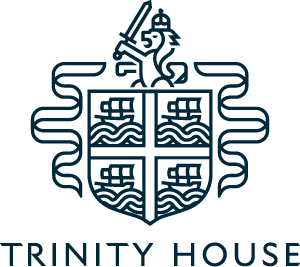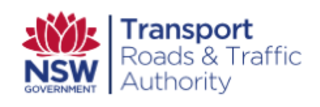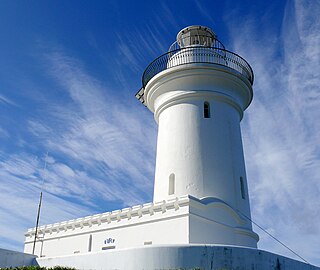Related Research Articles

The Corporation of Trinity House of Deptford Strond, also known as Trinity House, is the official authority for lighthouses in England, Wales, the Channel Islands and Gibraltar. Trinity House is also responsible for the provision and maintenance of other navigational aids, such as lightvessels, buoys, and maritime radio/satellite communication systems. It is also an official deep sea pilotage authority, providing expert navigators for ships trading in Northern European waters.

A coast guard or coastguard is a maritime security organization of a particular country. The term embraces wide range of responsibilities in different countries, from being a heavily armed military force with customs and security duties to being a volunteer organization tasked with search and rescue without law enforcement authority. In most countries, a typical coast guard's functions are distinct from those of the navy and the transit police, while in certain countries they have similarities to both.

Port Jackson, commonly known as Sydney Harbour, consists of the waters of Sydney Harbour, Middle Harbour, North Harbour and the Lane Cove and Parramatta Rivers, is the ria or natural harbour of Sydney, New South Wales, Australia. The harbour is an inlet of the Tasman Sea. It is the location of the Sydney Opera House and Sydney Harbour Bridge. The location of the first European settlement and colony on the Australian mainland, Port Jackson has continued to play a key role in the history and development of Sydney.
Responsibilities for traditional coast guard duties in Australia are distributed across various federal, state and community agencies. The de facto coast guard of Australia is the Maritime Border Command, a joint command of the Australian Defence Force and the Australian Border Force which works alongside the Australian Federal Police, the Australian Fisheries Management Authority, and the Australian Maritime Safety Authority. Each state and territory government have specific maritime safety agencies and police marine units. In addition, there are several private volunteer coast guard organisations which act as auxiliary search and rescue services and maritime safety educators with the largest organisations being the Royal Volunteer Coastal Patrol established in 1937, the Australian Volunteer Coast Guard established in 1961, and Marine Rescue New South Wales established in 2009.

The Roads & Traffic Authority (RTA) was an agency of the Government of New South Wales responsible for major road infrastructure, licensing of drivers, and registration of motor vehicles. The RTA directly managed state roads and provided funding to local councils for regional and local roads. In addition, with assistance from the federal government, the RTA also managed the NSW national highway system. The agency was abolished in 2011 and replaced by Roads & Maritime Services.

Sydney Ferries is the public transport ferry network serving the city of Sydney, New South Wales. Services operate on Sydney Harbour and the connecting Parramatta River. The network is controlled by the New South Wales Government's transport authority, Transport for NSW, and is part of the authority's Opal ticketing system. In 2017–18, 15.3 million passenger journeys were made on the network.
The United States Coast Guard is the coastal defense, search and rescue, and maritime law enforcement branch of the United States Armed Forces and is one of the country's eight uniformed services. It carries out three basic roles, which are further subdivided into eleven statutory missions. The three roles are:
The Specialist Operations was a Command within the New South Wales Police Force that was responsible for a range of specialist groups of the police force. The division was headed by the deputy commissioner of the NSW Police, whose position was occupied by Nick Kaldas prior to his retirement.
Courts of Marine Inquiry and Boards of Marine Inquiry are tribunals established in common law countries to investigate matters relating to shipwrecks, casualties affecting ships, or charges of incompetency or misconduct on the part of the masters, mates or engineers of ships.
A Sector is a shore-based operational unit of the United States Coast Guard. Each Sector is responsible for the execution of all Coast Guard missions within its Area of Responsibility (AOR), with operational support from Coast Guard Cutters and Air Stations. Subordinate commands within a Sector typically include Stations and Aids-to-Navigation (ATON) Teams. Some Sector commands also have subordinate units such as Sector Field Offices and Marine Safety Units that are responsible for mission execution in parts of the Sector's AOR. There are 37 sectors within the Coast Guard.

Pasha Bulker, later known as MV Drake and now MV Anthea, is a Panamax bulk carrier of 76,741 tonnes deadweight (DWT) operated by the Lauritzen Bulkers shipping company and owned by Japanese Disponent Owners. While waiting in the open ocean outside Newcastle harbour to load coal, Pasha Bulker ran aground during a major storm on 8 June 2007 on Nobbys Beach, New South Wales, Australia. It was refloated and moved to a safe location offshore on 2 July 2007 before being towed to Japan for major repairs on 26 July 2007.
The Sydney Harbour Trust began operations on 1 November 1900 with responsibility for the Navigation Department and Marine Board of Sydney Harbour. The Trust, as governed by an act of the New South Wales Parliament consisted of three commissioners appointed by the Governor of New South Wales. It was responsible for the improvement and preservation of Sydney's port. The trust regulated the movement of vessels and the handling of cargo in the port through a Harbour Master, carried out dredging operations, removed wrecks, granted licences for the erection of piers, maintained wharf facilities and collected wharfage rates, maintained swimming baths. The trust also managed fire fighting and other safety equipment within the harbour. All foreshores, lighthouses and tugs within the harbour which belonged to the Government were vested in the Trust, as well as the power to reclaim land. The Trust was wound up in 1936 with the establishment of the Maritime Services Board.
Maritime Safety Queensland (MSQ) is a Queensland government agency of the Department of Transport and Main Roads. The agency is responsible for the safety of all water vessels in Queensland waterways. It deals with marine pollution and provides pilotage for Queensland ports. The agency also maintains boating infrastructure including harbours and channels.

The SS South Steyne is a former Manly ferry on Sydney Harbour. She was the world's largest steam-powered passenger ferry and operated on the service from 1938 to 1974. Restored in the 1980s, she served as a restaurant ship in Newcastle in the 1990s, and in 2000 was moved back to Sydney and open to the public at Darling Harbour. Since April 2016 she has been stored at Berrys Bay. She was added to the New South Wales State Heritage Register on 2 April 1999.

South Solitary Island Light is an active lighthouse on South Solitary Island, an island within the Solitary Islands Marine Park, about 15 kilometres (9.3 mi) northeast of Coffs Harbour, New South Wales, Australia. The lighthouse is located at the summit of the island. It is considered the most isolated lighthouse on the New South Wales coast. It was first in New South Wales to use kerosene over colza oil, and the last to do so before converting to electric power.
The Chief Investigator, Transport Safety is the independent Government agency responsible for investigation of safety-related trends and incidents in the rail, bus and marine industries in the State of Victoria, Australia.

Roads and Maritime Services was an agency of the New South Wales Government responsible for building and maintaining road infrastructure and managing the day-to-day compliance and safety for roads and waterways.

Manly Wharf is a heritage-listed passenger terminal wharf and recreational area located at West Esplanade and serving Manly, a Sydney suburb in the Northern Beaches Council local government area of New South Wales, Australia. Since the 1850s, it has served as the Manly embarkation and disembarkation point for the Manly to Sydney ferry service.
The Maritime Services Board was a statutory authority of the Government of New South Wales responsible for marine safety, regulation of commercial and recreational boating, and oversight of port operations.

The Minister for Ports was a ministry first established in 1975 in the Coalition Lewis–Cutler ministry and abolished in 2011. It has had three incarnations and was renamed as the Minister for Ports and Waterways in the First Iemma ministry in 2005. In 2011 the portfolio was merged with that of Roads to form the portfolio of Roads and Ports.
References
- 1 2 Waterways Authority (1995–2004) Maritime Authority (2004– )
- ↑ "Roads and Maritime Services agency effective from today | Transport for NSW". transport.nsw.gov.au. Retrieved 15 November 2011.
- ↑ "NSW Maritime Operation Lights On safety campaign this weekend". Power Boat World. Tetramedia Pty Ltd. 10 November 2009. Retrieved 10 November 2009.
- ↑ "Public comment sought on new lifejacket laws". Yachte. November 2009. Retrieved 10 November 2009.
- ↑ "NSW Boat Registrations and Licences" 8 November 2023
- ↑ "Lighthouse Lights – NSW Maritime". maritime.nsw.gov.au. Archived from the original on 28 March 2011. Retrieved 3 October 2010.